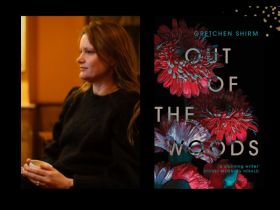Saman Shad’s sophomore novel, The Sex Lives of Married Women, follows three women – Meena, Sophie and Rani – as they navigate parallel sex and marriage difficulties, and come together to talk it out. All three have settled in Sydney in the wake of enlivening international journeys. Suburban life is beginning to take on a sexless, humdrum quality by comparison. And years of repressed rage, misunderstandings, onerous social norms and grief are making the boredom unbearably upsetting.
Meena fell pregnant while taking the Australian rite-of-passage of working in London, which solidified her relationship with Owen, despite its rocky foundation. She’s forced to return to Sydney, but over the years Owen’s hostility towards her has climbed. These relationship troubles feel particularly shameful to Meena in comparison to her sister, an accomplished ‘model minority’ with an affectionate, surgeon husband.
Sophie migrated to Australia from the US after meeting her husband-to-be, Todd, on a backpacking trip. They speedily married and had children, and appear to have a rock solid relationship. All this is put into question though when Todd asks Sophie to move with him – again – to the country, so he can be closer to his family. The accumulated bitterness of sacrifice and the menial nature of her job (which she got because Todd pulled some strings), leads Sophie down a path of rethinking everything.
Rani, meanwhile, is a stay-at-home mother, who originally came to Australia on a student visa. Bereaved by the death of her best friend, and by an earlier divorce, Rani finds herself troubled by cultural expectations alongside the impulse to try new things.
The novel deals with heavy themes like death, regret, abandonment, coercion and traumatic birth. The characters are likewise politically engaged. There are discussions of race and feminism, where diverse perspectives are expressed. Yet, the book still maintains a feeling of levity, through the humour the three main characters extend towards each other. The vibe is reminiscent of Sex and the City – only not everyone is white, and they have a social conscience and real-world responsibilities.
Implicitly, the novel shows the ways in which marriage issues come up alongside other interpersonal dramas. Making amends with one’s sister, best friend, former best friend or mother, can make a big difference in deciding what to do next. When Meena addresses her feelings towards her sister, for example, she becomes freer to make decisions, because she’s not weighed down by the anticipation of feeling the familiar shame of being the family’s black sheep.
Chatting and reconciling – particularly in the context of female friendship – is a means to find solidarity, reassurance and direction. Your experiences may echo the experiences of someone else, you can draw on the wisdom you share and you are not alone. These observations are sharp and point to a strength of the novel: the characters’ investment in each other.
Although the arcs of the novel’s many relationships are well-paced and usually earned, there are some features that bring a jolt to their trajectory. The dialogue can, at times, feel stilted or unrealistic. Devastating insults seem sudden and without an illustrated build-up. It’s as though everyone is looking to pick a fight. When Sophie tells Meena she needs to stop talking on the phone because “some of us have to work” (itself a biting insult), Meena responds that Sophie doesn’t “have to work; [she] choose[s] to work”. The conversation moves into a argument about privilege, even though whether or not someone is busy is not related to the question of why they’re working in the first place. This unusual conversation feels like an unnatural opportunity for exposition.
Similarly, moments of rapport-building and declarations of huge intimacies don’t always seem well-motivated. While still a stranger, Rani tells Meena that she occasionally gets possessed by the ghost of her friend, for example. These features of the novel do have a point and a benefit – frights and friendships move the plot forward. But they do somewhat compromise the otherwise immersive, relatable nature of the novel, especially in its world-building phases.
Read: Book review: Wild Dark Shore, Charlotte McConaghy
Overall though, the book is accomplished at providing both a light and a serious depiction of marriage and sex, and the importance of having friends on side as marriages struggle under the weight of past hurts and future plans.
The Sex Lives of Married Women, Saman Shad
Publisher: Penguin Random House
ISBN: 9781761345999
Pages: 320pp
RRP: $34.99
Publication date: 1 April 2025
Saman Shad
Penguin.





